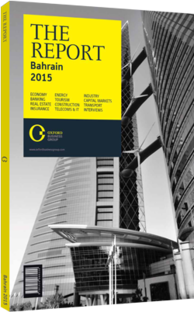Maher Salman Al Musallam, Acting CEO, Gulf Air: Interview

Interview: Maher Salman Al Musallam
What impact does competition among flight hubs in the GCC region have on the aviation sector?
MAHER SALMAN AL MUSALLAM: According to a study conducted by the International Air Transport Association (IATA), the Middle East is expected to have the third-fastest passenger growth rate in the world by 2016, with 5.2% growth compared to the annual global average rate of 4.6%. The study also estimates that GCC airports will be handling 250m passengers by 2020, with Dubai at the forefront. In the context of a power struggle between regional carriers and continually growing airspace congestion, operational changes encouraging efficiency are essential.
As the Bahraini national carrier we have taken a number of steps and measures to address these concerns, emphasising Bahrain’s role as a primary hub in the region. In anticipation of the increase in Gulf air traffic, Bahrain Airport Company has announced the expansion of Bahrain International Airport (BIA), scheduled to kick-off later in 2014.
The expansion will cater to 13.5m passengers, which is double the current capacity. Scheduled for completion in 49 months, the project will also double the number of existing terminals, increase the number of airport stands and bridges, expand baggage areas, and feature new check-in and immigration counters. The second phase of the expansion will include a business and entertainment centre.
Do you believe the traditional model of aviation alliances is still relevant in today’s market?
AL MUSALLAM: Airlines enter into code-sharing agreements and alliances with a number of global carriers in order to expand their networks exponentially, with this also benefitting passengers by a wider variety of destinations. Historically, alliances started out as simple code-share agreements, allowing the airline to sell a seat on a flight operated by a partnering carrier and to expand their network through greater operational efficiency. According to an IATA Economics briefing, there has been substantial evidence that airline alliances benefit customers in terms of improved services and lower fares on connecting flights. By sharing a mutual agreement with other international carriers, airlines are able to connect their passengers to more destinations without adding to existing air traffic.
The Middle East aviation market is expected to receive the delivery of over 2000 aircraft by 2032, valued at $550bn. How can regional expenditure translate into growing opportunities?
AL MUSALLAM: Bahrain is strategically located at an approximately eight-hour flight distance from the majority of the world, allowing it to be one of the primary hubs linking East and West. Bahrain has also seen a steady increase in expatriates residing in the country, from 244,937 in 2001 to 666,172 in 2011, reflecting an increase in demand for air travel. To support the expected growth in air traffic for the region, Bahrain will kick-off BIA’s expansion in 2014. Additionally, the national carrier is currently engaged in negotiations with its original equipment manufacturers to ensure Gulf Air’s future fleet and network requirements match its order book.
In light of the aggressive fleet expansion, what types of supply gaps in skilled labour are you seeing emerge in the GCC aviation industry?
AL MUSALLAM: The estimated growth in regional air traffic coupled with aggressive fleet expansion by Gulf carriers will require a pool of skilled personnel and specialists to support the operational changes accompanying this growth. As the national carrier of Bahrain, one of Gulf Air’s long-term goals is to create opportunities for Bahrainis and continuously work with the airline’s sister companies to develop the skills of young Bahraini aviation professionals in the Kingdom, setting them on the path towards successful careers either in Bahrain or elsewhere.
You have reached the limit of premium articles you can view for free.
Choose from the options below to purchase print or digital editions of our Reports. You can also purchase a website subscription giving you unlimited access to all of our Reports online for 12 months.
If you have already purchased this Report or have a website subscription, please login to continue.

